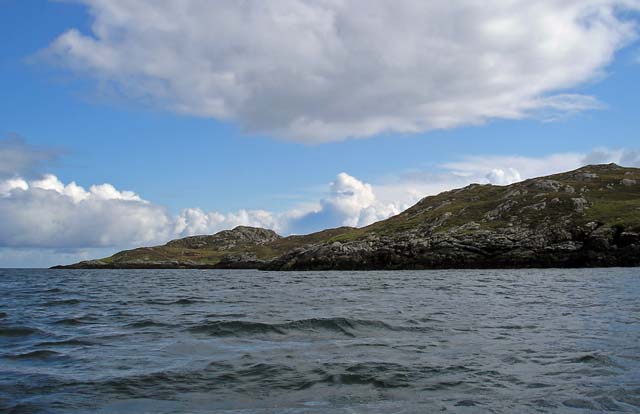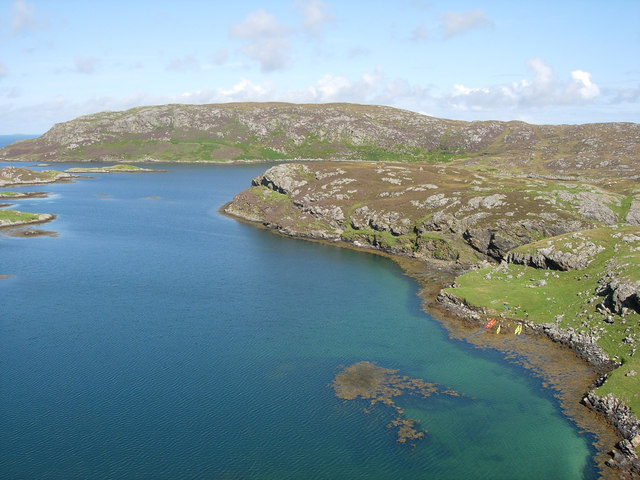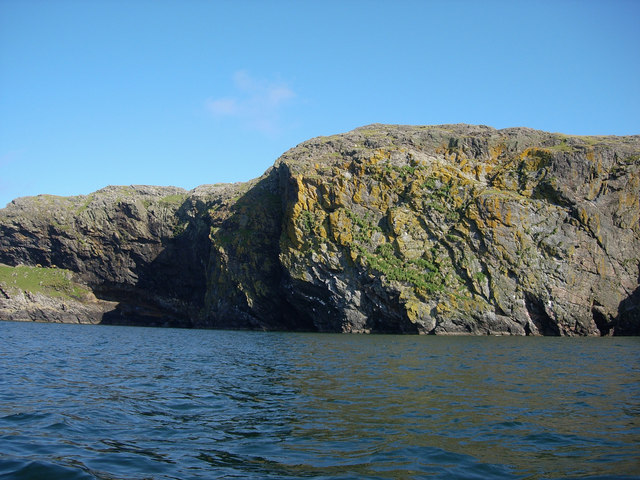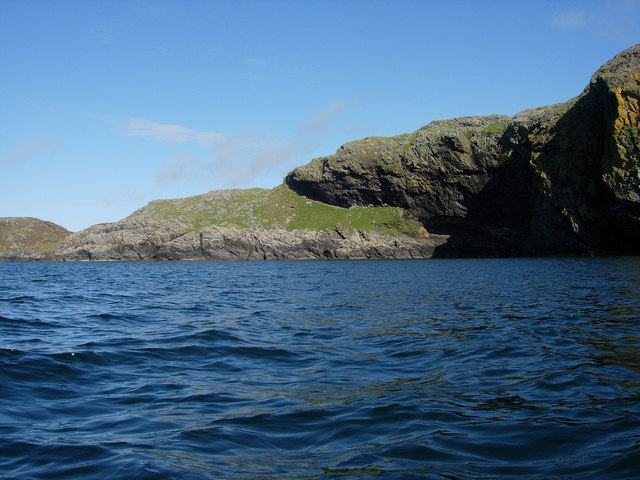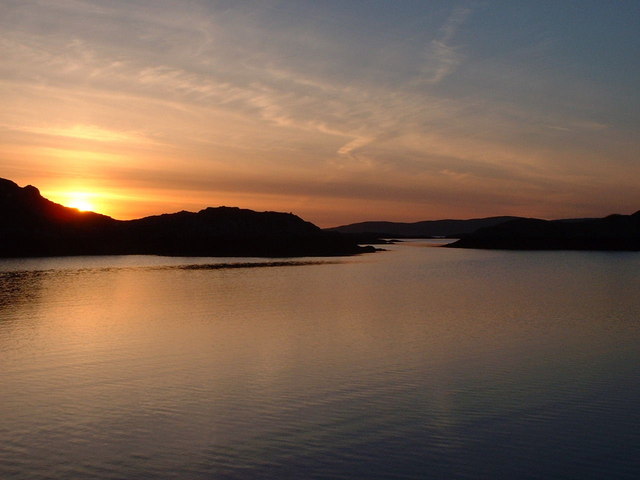Rubha na h-Uamh
Coastal Feature, Headland, Point in Inverness-shire
Scotland
Rubha na h-Uamh

Rubha na h-Uamh is a picturesque headland located in Inverness-shire, Scotland. The name translates to "Cave Point" in Gaelic, which is fitting as the headland is known for its stunning sea caves and rock formations.
The headland is situated on the coastline, offering sweeping views of the surrounding waters and rugged cliffs. It is a popular destination for hikers and nature enthusiasts, who come to explore the coastal trails and take in the breathtaking scenery.
Rubha na h-Uamh is home to a diverse array of wildlife, including seabirds, seals, and occasionally dolphins and whales. The headland's rocky shores provide a habitat for marine life, making it a prime spot for birdwatching and wildlife photography.
Visitors to Rubha na h-Uamh can also discover the ruins of an ancient fort, adding a historical element to the natural beauty of the area. The headland is a tranquil and remote location, perfect for those looking to escape the hustle and bustle of city life and immerse themselves in the peacefulness of nature.
If you have any feedback on the listing, please let us know in the comments section below.
Rubha na h-Uamh Images
Images are sourced within 2km of 57.00807/-7.3330269 or Grid Reference NF7603. Thanks to Geograph Open Source API. All images are credited.


Rubha na h-Uamh is located at Grid Ref: NF7603 (Lat: 57.00807, Lng: -7.3330269)
Unitary Authority: Na h-Eileanan an Iar
Police Authority: Highlands and Islands
What 3 Words
///trading.copes.steam. Near CastleBay, Na h-Eileanan Siar
Nearby Locations
Related Wikis
Hellisay
Hellisay (Scottish Gaelic: Theiliseigh) is a currently uninhabited island and is one of ten islands in the Sound of Barra, a Site of Community Importance...
Gighay
Gighay (Scottish Gaelic Gioghaigh) an uninhabited island off the northeast coast of Barra. It is one of ten islands in the Sound of Barra, a Site of Community...
Flodday (Sound of Barra)
Flodday or Flodaigh (Scottish Gaelic), is a currently uninhabited island that lies to the north east of Barra and is one of ten islands in the Sound of...
Fuiay
Fuiay (Scottish Gaelic: Fùidheigh) is an island in Scotland. It is one of ten islands in the Sound of Barra, a Site of Community Importance for conservation...
Nearby Amenities
Located within 500m of 57.00807,-7.3330269Have you been to Rubha na h-Uamh?
Leave your review of Rubha na h-Uamh below (or comments, questions and feedback).






